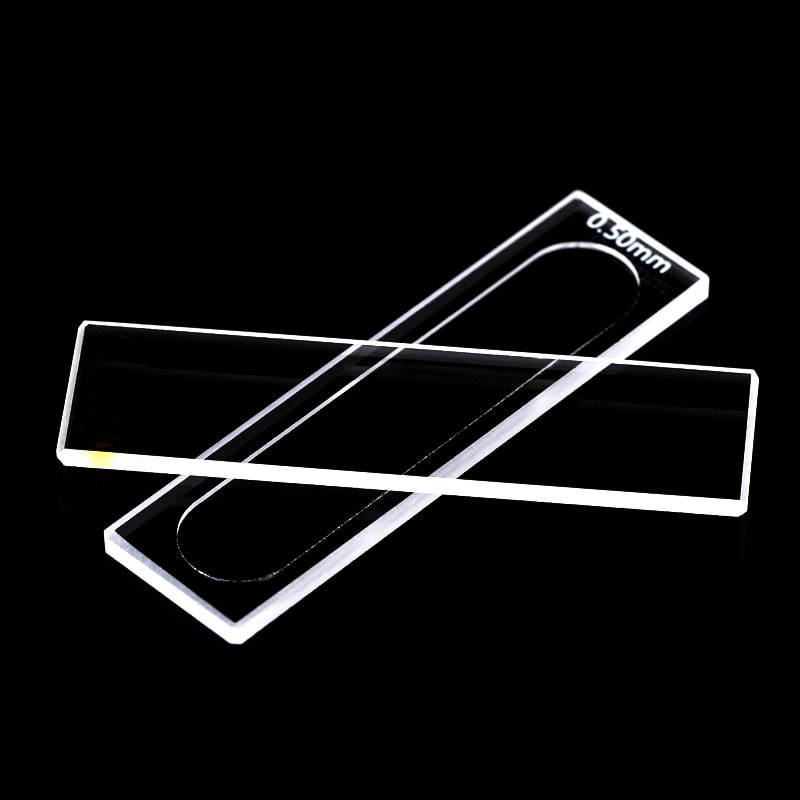The spectrophotometry technique is the base of scientific discovery. It is a way to discover the secrets of light absorption and transmission over particular wavelengths. Cuvettes are essentially the vessel that houses the samples that are to be studied. The cuvette is a tiny container that appears insignificant, but its structure includes the length of the cuvette’s path and material selection, are crucial to obtaining accurate details on concentration and purity. Let’s take a dive into this fascinating universe where dimensions and size of cuvettes determine the outcome of every test.
Power of Cuvette Pathlength
Imagine a beam of light moving through a liquid. What happens depends heavily on the cuvette path length, the distance that light passes through the liquid. Many laboratories employ a standard cuvette with a 1 cm path. This is the best option for balancing practicality and sensitivity. Why is this important? The longer the path is longer, the more light will be absorbed. This can increase the intensity of small samples. When it comes to concentrated solutions, like nucleic or protein acids, a short pathway length could alter the way you play. It can reduce the requirement for dilution while preserving precious samples and cutting down the time needed to prepare. What’s the lesson to be learned? The art of matching the length of the path to samples’ requirements is a fine art that boosts reliability.

Image credit: cuvet.co
Cuvette Dimensions: A Look at More Than What Meets the Eye
The cuvette’s size does not only determine how much liquid can be contained however it is also how it interacts with the instrument. Cuvettes come in different sizes and shapes that are suited to particular needs. Semi-micro cuvettes are an example are smaller in size and thicker wall thicknesses, are made to handle small volumes of samples. Imagine a tiny amount of nanoliters or perhaps a rare biological extraction. They have thick walls that allow light to flow through the sample without even wasting just a drop. Comparing this to cuvettes there is a noticeable difference: less pipetting steps more accuracy, less mistakes, and outcomes that are long-lasting. It’s an innovative tweak that will show that size isn’t just a quantity, but a strategy.
The 1cm Length of the Path Cuvette is a Lab Favorite
Why does the 1 cm path length cuvette reign supreme in so many experiments? It’s the best for biological measurements, where there are a lot of samples and every milliliter is important. This traditional design provides consistently high absorbance without overpowering the detector. This makes it ideal for everything from DNA purity tests to enzyme assays. This isn’t the model that will work for everyone. If you switch it out to a cuvette with distinct geometry or length, like one for studies on emission The results could be wildly distorted. Selecting the right instrument is important, and do not use only the one you are comfortable with. A wrongly matched instrument is similar to a cuvette not well-matched.
Material Matters beyond Size and Path
Cuvette size is just one aspect of the issue. Material choice makes the difference. Quartz and glass cuvettes are renowned for their high light transmission rates. They’re durable, reuseable and are ideal for tough spectroscopy jobs. On the flip side plastic cuvettes provide affordability and convenience to the table. They can be used and thrown away. You don’t have to clean, no risk of cross-contamination. These are great for testing in aqueous fluids or speedy DNA/RNA tests. The price? Low accuracy at certain wavelengths. Quartz is the preferred material for purists, whereas plastic is the choice of the practical.
Accuracy in Practice
The versatility of cuvettes is what makes them attractive. With spacers, short pathways can be used to deal with concentration samples. Larger vessels are better suitable for bigger volumes. The clarity of results is dependent on the length of the path and size, as well as the material used. The lab is measuring a rare, protein. A semi-microcuvette that has a narrow pathway will prevent dilution headaches and give reliable results fast. Contrast this with a lazy swap of cuvettes mid-experiment, and the numbers falter. This is a reminder that in spectrophotometry, the smallest details wield the biggest impact.
Cuvettes might be small, however their value is enormous. The vessels are available in a variety of sizes starting from the cuvette with a 1 cm length path to ones that are custom made. They help bridge the gap between insight and sample. If you’re after high-quality or even concentration, the correct cuvette will transform a weak measure into a great one.